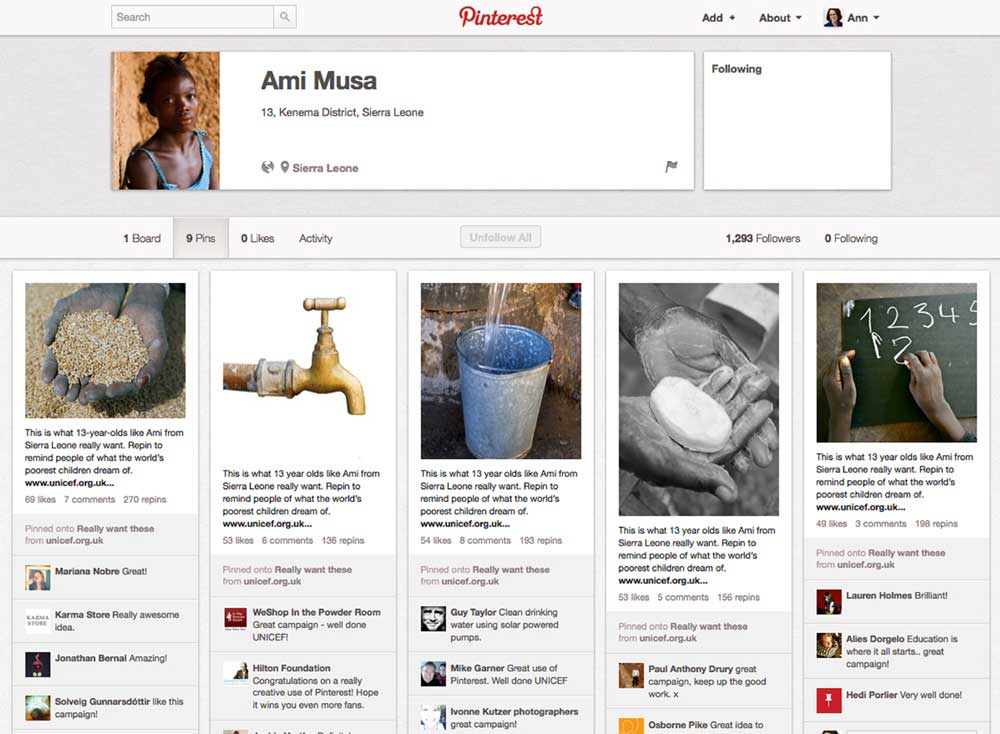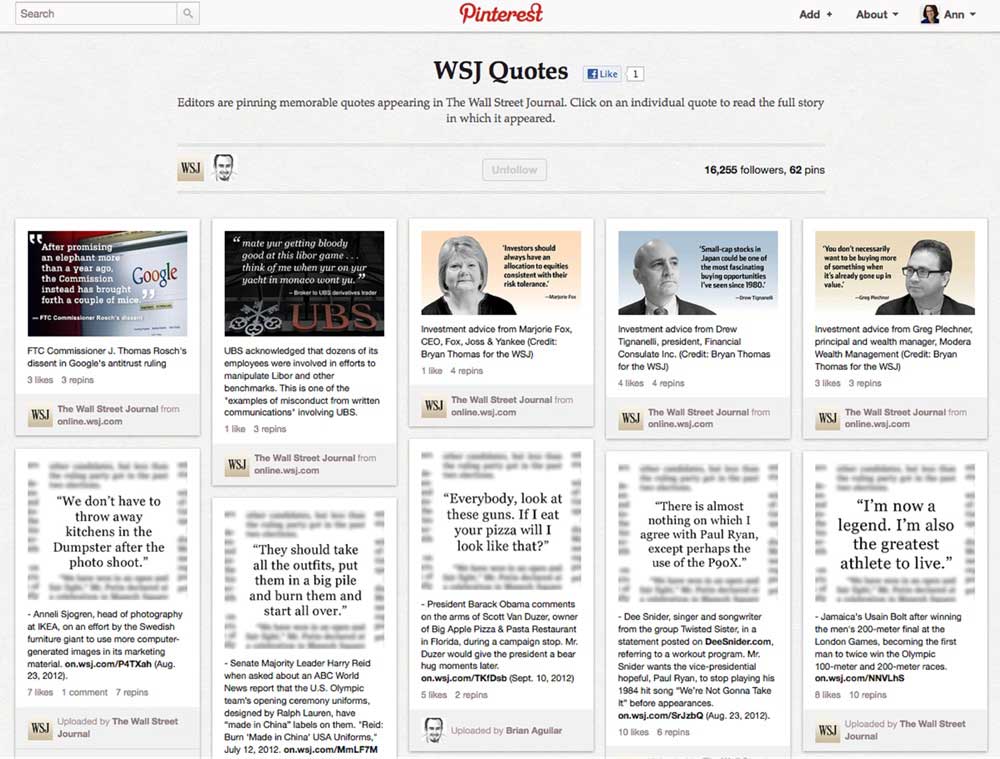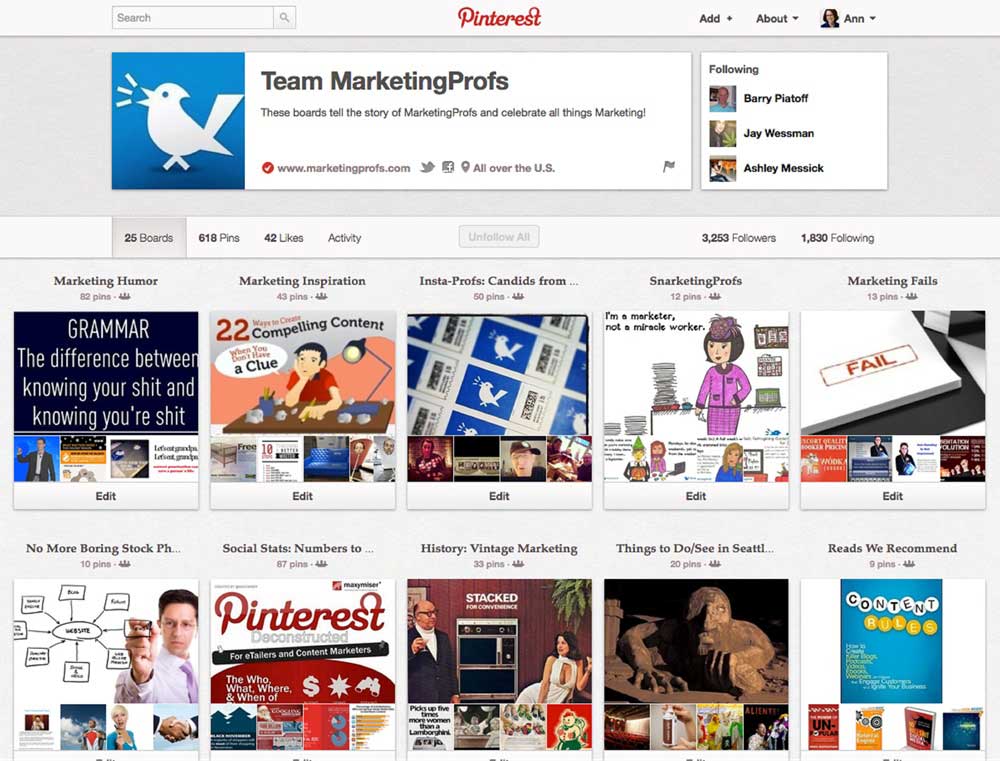As storytelling becomes more and more part of marketing, another trend is coming into focus: Brands are becoming more visual. They're using emerging image-driven networks such as Pinterest and Instagram, and they're making compelling visual updates to venerable platforms such as Facebook, Google+, and LinkedIn.
Businesses that aren't ready for this visual revolution will get left behind.
How can you prepare your brand to benefit from the power of visual content such as photos, slides, infographics, cartoons, and more? What kind of content works best for telling a visual story that packs a punch? And how can inherently boring organizations (we're looking at you, B2B!) create compelling visual content?
During our recent keynote at the MarketingProfs Digital Marketing World online program on content marketing, we (along with Mikes Hayes of Ben & Jerry's) offered our insights into the power of visual content marketing for brands. The slide deck from that event is embedded below. (You can also access the entire talk for the next 90 days.)
What follows are some highlights from that talk—including the visual opportunity for brands, and how they should embrace it.
Recent data from MarketingProfs and the Content Marketing Institute found that B2B marketers' chief concern is to produce enough content to attract customers. Brand-builders need to better understand how all newer forms of content, especially visual forms, can help them both produce enough content and differentiate themselves in a sea of sameness.
New Social Media Platforms
Social media platforms are (in part) driving this visual revolution:
Google+. In many ways, the visual revolution launched in the summer of 2011 when Google launched its own social channel, offering up plenty of eye candy, including plentiful white space, larger photos, post thumbnails, avatars, and the very first version of what we now call cover photos.
Pinterest. Around this same time, Pinterest launched its unique and addictive visual platform that quickly skyrocketed, becoming one of the top social sites. Marketers took notice: For some brands, referring links from Pinterest bought more visitors to their sites than Facebook and Twitter—and more users liked/followed those brands on Pinterest than they did on Facebook and Twitter.
Instagram. This fun photo-sharing network wasn't far behind, racking up honors such as App Store App-of-the-Year and reaching user benchmarks faster than other networks, and, of course, being acquired by...
Facebook. In addition to adding Instagram to its portfolio, Facebook has spent the last year releasing many new visual features, including (more in-line with Google+) cover photos, larger photos, post thumbnails, and avatars—and its Timeline update, which boosted engagement via brand history and fun photo milestones.
Twitter. For its part, Twitter got into the game in a different way by closing off their once wide-open API and shutting out third-party content, such as Instagram's, from its fast-moving stream. Twitter quickly replaced those fun, visual snacks with (very) short-form video, via its own acquisition of video app Vine https://vine.co/ which plays in-stream and gives brands new storytelling opportunities.
Five Key Considerations
What do all those recent development mean for you and your brand? Brands must consider five key things when they think about telling their visual story across one or more of those platforms.
1. Brands have an unprecedented opportunity
We all are witnessing a new dawn in marketing, which is embracing content and story as its cornerstone. This visual revolution and the growth in new platforms give us not just new tools but a whole new opportunity to rethink the way we tell stories.
The following are a few great examples of brands that are doing a great job of embracing visual storytelling as an opportunity.
Xerox. Look at how Xerox produced a two-minute case study video to highlight how it helped the Ducati motorbike brand increase its business efficiency during a period of rapid growth. In the course of a few years, Ducati grew rapidly, from 12,000 to 41,000 bikes in production per anum. Xerox uses video to tell the story of how it cut expensive outsourcing and improved efficiency in technical documentation for the Ducati. Xerox might have chosen to simply tell this story in the traditional business-to-business way—writing a case study or whitepaper. Instead, it embraced the visual as an opportunity to tell a more engaging client-success story.
Warby Parker. Similarly, eyeglass retailer Warby Parker did so with its annual report. Rather than producing a thick document destined for the recycle bin, Warby produced an online visual report with a hefty dose of fun. This approach doesn't work for everyone, of course: Critical here is that this report is also very on-brand with the glasses company, which is known for doing things differently.
The intro copy to the report reads as follows:
Herein you'll find detailed information about our accounting policies, followed by a terrifying array of charts.
Just kidding.
The Annual Report is our chance to sneak you inside Warby Parker headquarters and show you how it all goes down—bagels and bloopers included.
UNICEF. Speaking of on-brand, we love how UNICEF took advantage of a visual opportunity via Pinterest. UNICEF created a Pinterest board, "pinning" the items that the poorest children around the world need. UNICEF created the board using the profile of Ami Musa, a 13-year-old girl living in Sierra Leone. But the focus of the effort is to call attention to children like Ami all over the globe.
All of the pins—for clean water, food, shoes, education—lead to a UNICEF site on which people can make donations toward helping these children. That approach is particularly effective, because it turns the idea of Pinterest on its head—in the sense that the site is typically highlighting more frivolous items for personal gratification, rather than items vital for health and life... for others.
Pew Research. Here's our final B2B example on the visual opportunity: We like what Pew Research was doing on Instagram. It had been publishing a chart of the day—a kind of nugget of information, which is a great model for various kinds of B2B companies highlighting their thought leadership and expertise. We wish Pew had kept it up; unfortunately, when we last checked, the account had been updated seven weeks earlier. Maybe that's because Pew wasn't getting engagement here; but, it wasn't following anyone back, so essentially it was only halfway there in seeing visual content as an opportunity.
Pew was using this channel to broadcast, in other words, and squandering an opportunity to engage.
Marketing takeaway
Are you producing the content you're producing by default ("whitepapers have always worked for us"), or are you experimenting with new platforms and new methods of storytelling?
2. Brands have an imperative to engage
Along with the opportunity, you have an imperative to engage. Consider how your visual content can extend your brand story—and how it can help you differentiate. How might your visual story help you stand out? In a world where every brand is a publisher, you need to express your inherent uniqueness using every tool in your tool shed. Visuals can help you differentiate who you are, what makes you unique, and why you are different.
Wall Street Journal. Even if you are a consultancy or a B2B company with no inherently visually interesting content, you can create some with a little thought and creativity. The Wall St. Journal editors have created a Pinterest board with some memorable quotes from the newspaper.
Each of those quotes links back to the full story at the WSJ site: a great way to reimagine what you already have as a content asset, to build and extend further engagement. It's an unexpected and interesting use of Pinterest. For example, a company could highlight some memorable thought leadership perspectives from recent blog posts or e-books it publishes, or a research company could publish fun facts.
MarketingProfs. At MarketingProfs, we use visual channels to help differentiate ourselves from other marketing educators. Here you'll see our Pinterest boards—where we highlight not just our own research and articles and other content but we also celebrate marketing in general. Our bigger story is that although we are serious marketers... we also think that business is fun.
Marketing takeaway
Images and graphics can help you project depth to your brand's character—perhaps a lighter side or a behind-the-scenes snapshot—as well as offer you an opportunity to tell your story in a way that helps you stand out from the crowd of competitors.
3. The best content—visual and otherwise—is content worth sharing
What can you create that brings your prospects and customers into your story—that makes your story their own?
Nike is a master at doing so. It's great at telling its larger story in a way that connects with customers so that its customers can make the Nike story their own. Last summer, Nike launched its Find Your Greatness campaign to coincide with the start of the London Olympics. It celebrated everyday athletes from all over the world—but the bigger story behind it is that we all have the capacity for greatness.
That's why the #FindYOurGreatness campaign continues to resonate with all sorts of people, who have taken the idea and run with it (pun intended!). Nike's is also a great example of how the best content often inspires more content.
Hashtags connect offline and online. It's harder to tap into that same sharing in the B2B space, but one easy way is to simply use visual channels as a way to connect offline with online, to extend your reach. You might consider using visual platforms such as Instagram and Pinterest to extend your physical location with geolocated photos that give an inside view or a richer look at your B2B service or company.
We took such an approach at MarketingProfs by encouraging attendees at the annual MarketingProfs B2B Forum, held in October in Boston, to tag their Instagram photos with the event hashtag, #MPB2B. At the event, we awarded prizes to the photos of the day.

At Dreamforce 2012, a few exhibitors promoted their booth area with the event hashtag #DF12 to both invite people in as well as geolocate a booth location on what was a massive trade show floor. At a smaller conference, this approach could work to offer a special giveaway to followers.
Marketing takeaway
Use visual channels as an opportunity to involve your prospects and customers in your story. Give them a change to tell your story for you. Hashtags on visual channels can help connect offline and with online.
4. Be a Content Brand not a brand with content
What that means is that you should tell your story strategically across channels, to ensure a cohesive and consistent message.
McKay Flooring. A tiny little flooring company in Glasgow, Scotland, McKay Flooring does a tremendous job of highlighting cool and interesting flooring options—which is part of its story. It extends that story everywhere—via microsites, e-books... all of its content—including social media outposts such as Instagram and Pinterest.
Marketing takeaway
Even a small brand can have greater impact by acting like a content brand, and not a brand with random acts of content.
5. Show how your product lives in the world
Show how you help the people you are trying to reach, and use your visual content to give your audience better insight into your brand.
Here's a shot from General Electric's Instagram feed. GE uses its Instagram presence to highlight groundbreaking research and technology. But more than that, it uses that content to provide a richer look inside GE.

In the photo taken recently, a GE technician works on a plane engine inside the Turbulence Control Structure at the GE aviation facility in Peebles, Ohio. Did you know GE had a Turbulence Control structure? Do you even know what it is? It makes you a tiny bit curious, right? (What's also wonderful, by the way, is the way that in the comments on the photo GE responds to inquiries about what it looks for in the engineers they hire. It's a great example of engagement.)
Oscar de la Renta. Oscar De La Renta showed how its product lives in the world by live-pinning the behind-the-scenes of a bridal show. What's so special about that? It could have used Pinterest to simply highlight gowns or the bridal fashions it sells. But, instead, it used Pinterest to story-tell—to give an inside peek at an event and extend a live event into the online world. The result: 32,000 followers.
Marketing takeaway
Use visual channels to tell stories, not just showcase the things people already know. Even if you are a technology company, your story is always about people whose lives your technology improves.
* * *
So now it's your turn to execute on a bit of your own inspiration. How might you tell your visual story? What other examples have you seen and loved? Leave a comment below.














